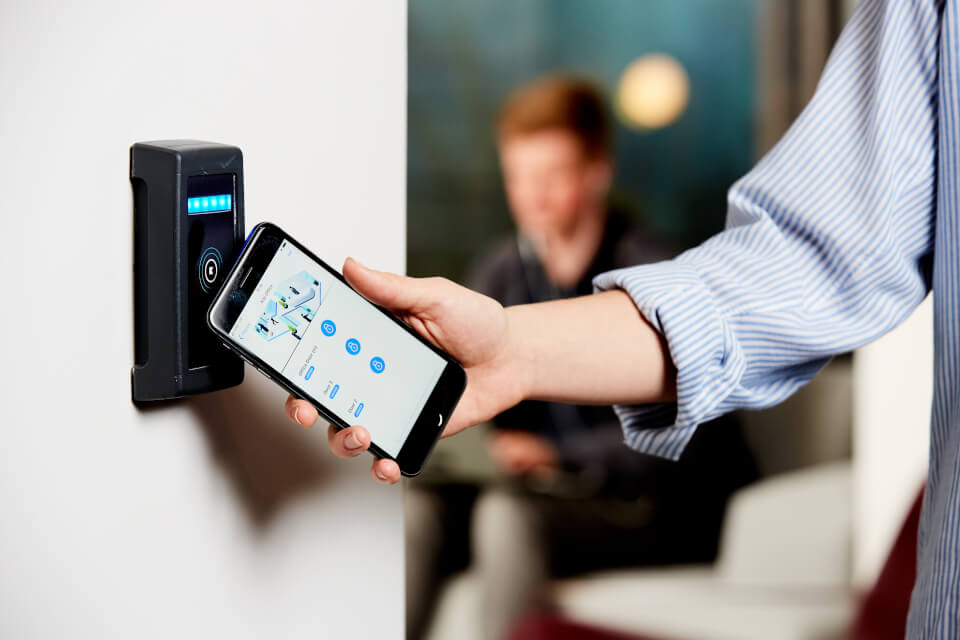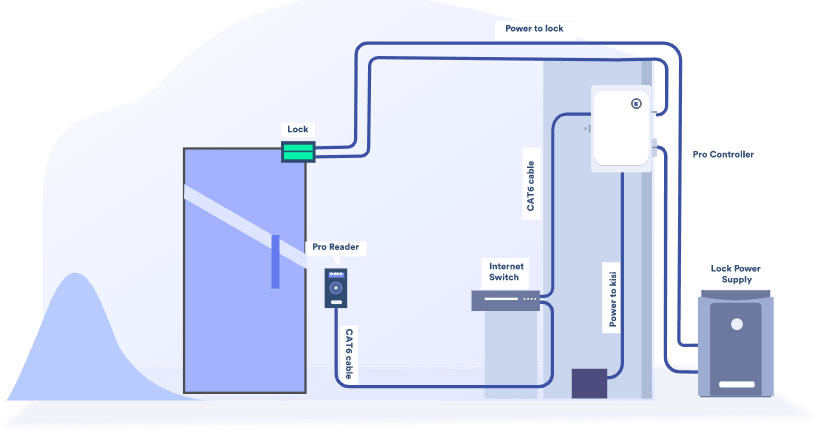Server rooms are the heart of any high-performing facility. From keeping your network online to storing sensitive data and assets, servers are the key to efficient and uninterrupted operations. And because servers can be quite expensive, they’re a financial investment as well as a solid business decision. For these reasons, server room monitoring is critically important. But it can be difficult to know if you’re taking every safety precaution necessary. If you’re wondering how, exactly, to make sure that your server room is as safe as possible, read on and use this guide and sample checklist.
Understanding Server Rooms #
A server room houses computer servers and other associated hardware, which keep your network and digital operations online. They range from about the size of a closet to even taking up entire floors, depending on the size of your operation. Larger server rooms that spread across buildings are called data centers. Server rooms are physically separated from the rest of the equipment in an office, so they cannot be combined with other rooms or storage spaces. Servers are precision machines whose requirements can affect your whole business if you do not treat them properly. They store your digital assets, which often includes sensitive data and backups in case of loss.
These rooms have unique requirements, but thankfully they’re regulated by a number of industry standards. Server rooms must meet specific environmental conditions to be able to support your network, avoid crashes and failures, and prevent physical damage to these invaluable tools. As a general rule, servers are huge energy spenders, produce heat, and therefore work best in cool temperatures, but not freezing. It takes a bit of planning, but enacting security measures for these rooms is worth the additional effort.

Enacting a Security Checklist #
In order to protect your computer servers from serious issues, you should make security your first priority when you’re preparing a dedicated server room. This is even more important for businesses that are either buying servers for the first time or expanding their existing server room. Servers are a huge investment for any business, building or team, so make sure that you’re treating them correctly and ensuring that they’ll still work flawlessly even years down the line.
Each business will have different needs and will purchase different kinds of servers, from tiny ones to racks of the machines stacked on top of each other. You decide how dedicated you want your servers to be. There is no perfect way to keep your servers and network safe from harm, but the following tips on this list are a great way to get started and plan for longevity with your server room.
Cooling Server Rooms #
Computers generate heat when they operate. You’ve probably experienced the heat coming from beneath a laptop and heard that little, perpetually whirring fan. Different types of servers can be exponentially more powerful than a laptop, so they’ll need a bit more cooling than what a normal fan can provide. If your servers get overheated, the resulting issues or malfunctions can affect computer performance throughout the whole office, reduce the server lifespan and even cause significant hardware damage. Therefore, a proper AC system is a prerequisite to server room security.
As stated before, the industry standard is to store servers in their own room, especially if you’re using multiple devices. If more than one server is stored in the same room, make sure that they are placed strategically to allow maximum space usage while still ensuring they can cool. The location of the server room within the building layout is also important—if it’s in an area that naturally gets very warm or even just a place without much access to the HVAC system, you won’t have the same ability to scale as you would in another, more well-suited space. Also make sure that your room will be in an area that is protected from fires, floods, storms, and any other hazards that could take out your equipment and leave you without a network. For larger rooms, install a climate control system set to 65°F or a little warmer.
Space Requirements #
Server rooms should be windowless to avoid exposure to the sun, which can heat up the machines past their safe point. Ceilings should be at least nine feet high to allow you room to grow and to allow more space for heat to dissipate. Server room doors, too, are unique: They should be at least 42 inches wide and at least 8 feet tall, which allows easy installation of bigger servers. Floors should be made of antistatic materials to make moving easier and prevent shocks.
Ensure that you have enough room for future growth, including space for extra cooling units. This way, you don’t need to spend money to relocate your servers every few months or years. Consider soundproofing each surface in the space, including walls, ceilings and doors—this prevents anyone who works nearby from being distracted by the whirring of the servers and the air conditioning.
Equipment and Electrical Requirements #
Your server racks should be professionally bought and installed, including adequate grounding and bracing. You don’t want your servers to fall and break or injure anyone who happens to be in the room. Server aisles should be at least four feet apart and no closer. The room should have a backup electrical system in case of a power outage. Your servers also need to be grounded and separated from any equipment that generates extra heat. Ensure that the computing equipment has a maximum electrical intensity 300 watts per square foot.
Check your cables often and physically monitor for other hardware issues. Along with your equipment, install monitors for smoke, humidity, and other environmental factors. Consider installing a telephone line or some other easy form of communication so that employees can contact your team or emergency services quickly if there is a problem, like overheating or even an equipment fire.
Security Requirements #
Now that you’ve protected your room’s equipment, it’s time to ensure that it is safe from intrusion. The doors should be locked at all times. Install door alarms at each access point to the server room. You can also invest in video surveillance, which is an extra layer of security at those access points. Surveillance systems will keep video for a period of time after it is recorded, so you don’t have to worry about losing footage of any issues or even break-ins.
Implement a strict visitor policy with continuous video or alarm monitoring. Issue ID badges for authorized staff members and restrict access to anyone that doesn’t need to enter the server room. If you already have an access control system in place, this is even easier—just reconfigure the security clearance of your server staff. Securing your server room with Kisi's cloud-based access control system will allow you to integrate any of the above features, plus plenty of other choices.
Access control systems can integrate seamlessly into your business, and you might find that installing one for your server room is a great first step for you to secure your entire office or building with one. From one monitor or app, you can watch surveillance footage, keep track of the people who have entered the server room, and add or revoke access to the room, giving you more peace of mind about facility safety.
Finding the Right System
#
A comprehensive server room security plan can be difficult to implement, but it is absolutely essential for the longevity of your data and network. Invest now and avoid worry down the line. You should also include an emergency action plan for immediate, automated response procedures and modern security systems can help with setting such actions.
Kisi can help you grant and revoke access remotely, give temporary visitor access, allow smartphone access and monitor and trigger alarms. The system even integrates with Active Directory, Google Apps, Yubike and more. Kisi can secure your server room and allows to easily move from a single door deployment to a larger setup whenever needed.


